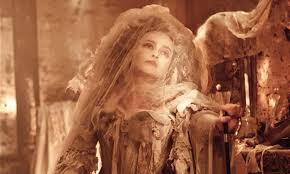Spinsterhood in the Victorian Era
Who is a Spinster?
In the Victorian age, spinsterhood was considered a curse for women. Marriage was the primary goal for most women and spinsterhood indicated that there was something wrong with a lady which was why she could not get married.
Marriage was supposed to be the natural purpose of a woman’s life. This was because it was frowned upon for women to work during this time and the woman needed someone to take care of her financially.
In the upper classes, women looked after the children, tended to their homes, hosted parties and bore children. In the lower classes, women tended to assist their husbands at work or even work outside their home to make ends meet.
What was the Role of a Spinster in Society?
Spinsters are women who do not get married. They get this title after a certain age. For example, an unmarried woman who is around 20 years old will not be considered a spinster. A spinster takes up different roles according to the class of society she belongs in.
For example, a woman belonging to a lower class will generally go outside her house to make up a job and provides for her family. This occupation may be a governess for upper-class families. Some women of the lowest strata become servants or work in factories.
Unmarried women of middle class and upper-class household usually move in with relatives to take care of their nieces and nephews or sometimes even serve as companions to elderly relatives. They also assist in cooking and taking care of the household.
Financial Stability
With the rule of Queen Victoria, there was a rise in the newest class in society, the Middle Class. Marriage was mandatory for the women belonging to this class, preferably to men of wealth, or set for a considerable inheritance or being to higher classes.
The women were taught to not work outside their homes and were trained to be properly groomed with the dreams subjected to being a good mother and wife. Due to these strict rules, the stereotype of spinster was solidified as a failure in society.
The economic situation of the 19th century worked against the ladies of the time since they were encouraged not to work. This forced them to abide by societal norms to marry a rich man who would be pleased by her manners. However, a spinster who had economic freedom was out of this purview.
Spinsterhood in the Victorian Era
Due to this, they could show emotions to whomsoever they pleased as there would be no consequences for their actions. They could reciprocate the feelings of a man, without their reputation being put into jeopardy, however, they were just used by the men of upper classes who need by marrying woman approved by society.
Spinsters, even though had their freedom, did not have the societal acceptance and were merely used as entertainment by the men.
During the war, many men went to fight the war. This resulted in an increase in the number of spinsters. During this time, women started to work in the factories to care for their families, the societal taboo which was attached to a spinster slowly started to wane.
Portrays of Spinsters in Literature
In literature, spinsters were portrayed as eccentric old ladies since their loneliness made them crazy. In Great Expectations, Miss Havisham was considered a social pariah since she was left by her fiancé on her wedding day and remained unmarried.
Dickens portrayed her as a lady with bizarre habits such as never getting out of her wedding dress and not cleaning the decomposing wedding meal which was set years back. Miss Havisham in the Great Expectations movie
More Info On- Who is a Spinster?
